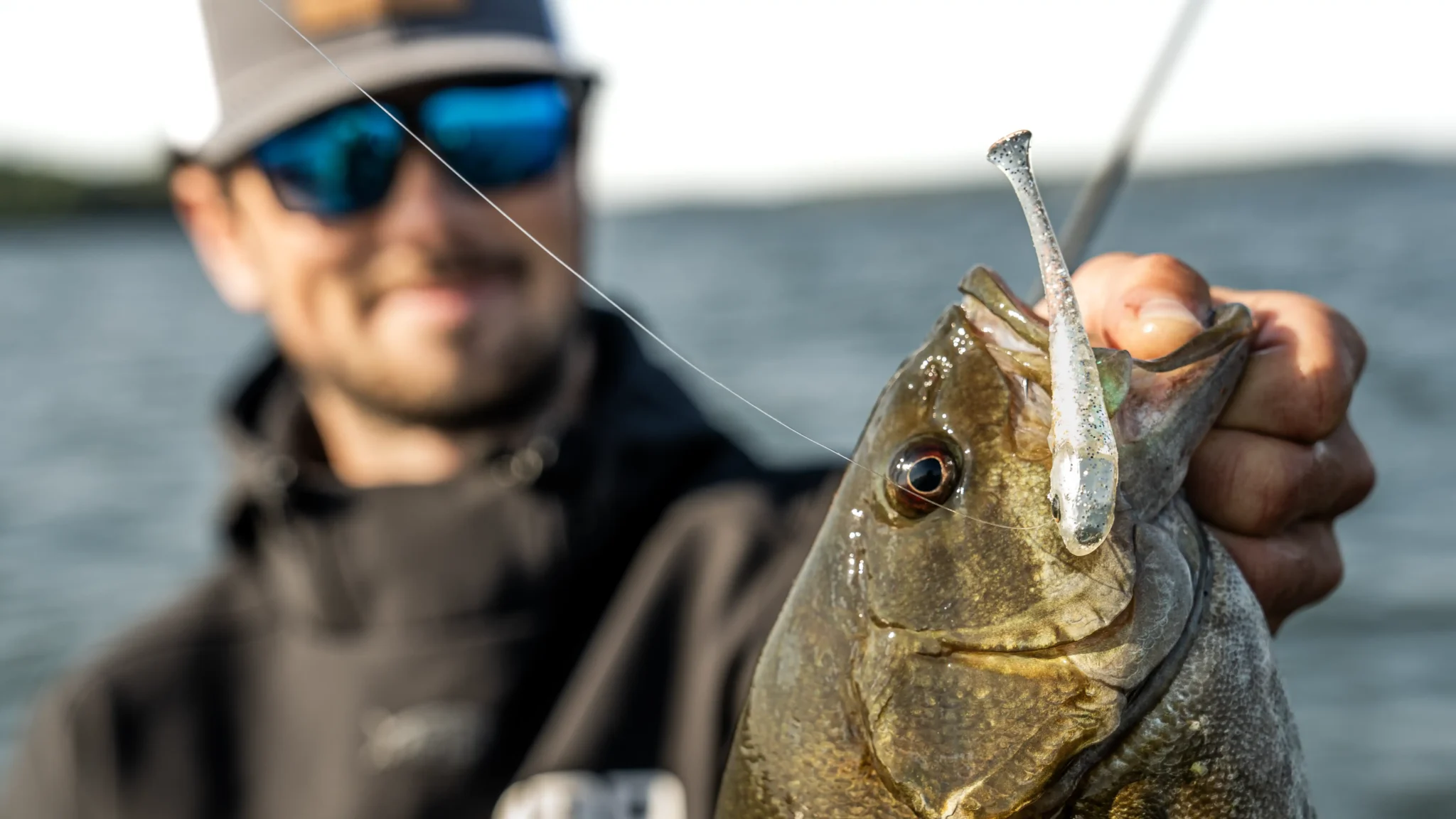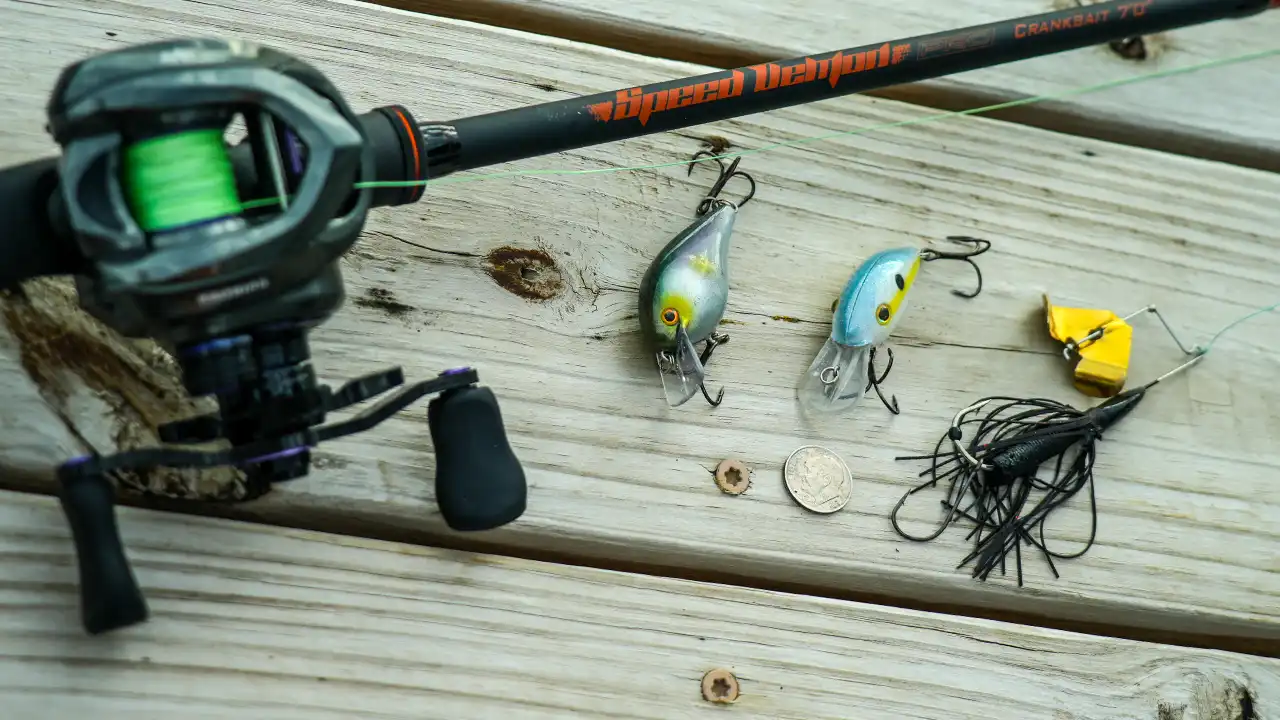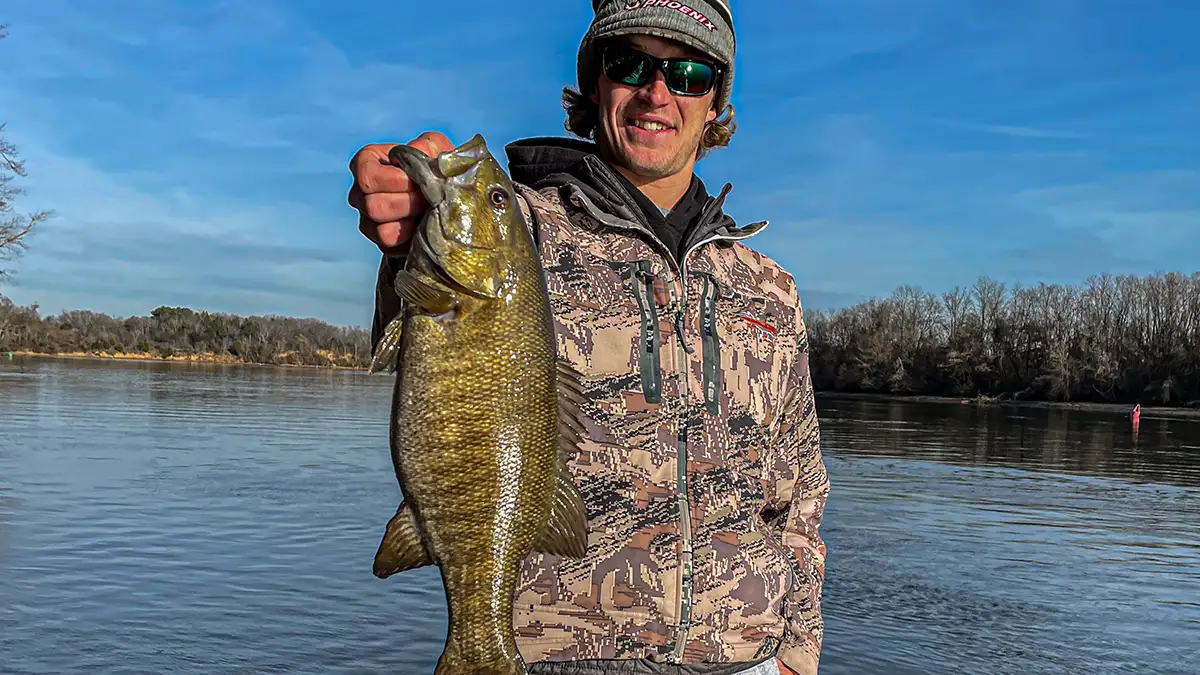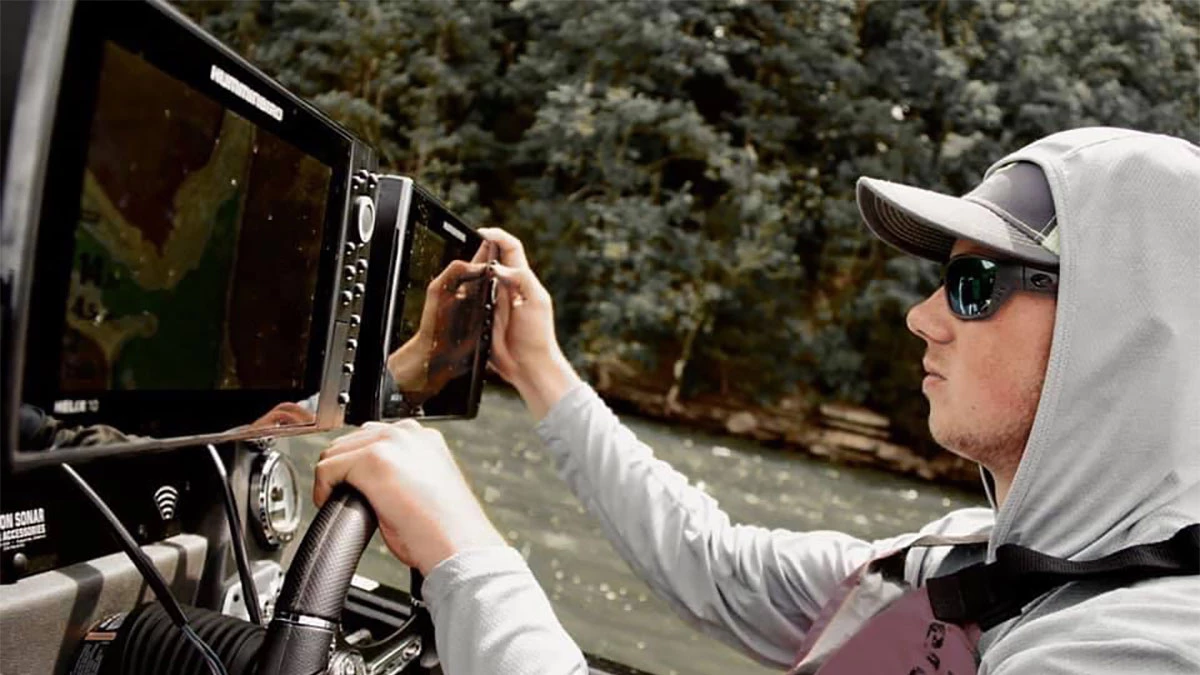While ledge fishing is typically known as a summer pattern, it’s still a great way to catch giant fish well into the fall. Both river and creek channels create ledges consisting of a drastic depth change. These ledges are the perfect location for bass to congregate and ambush bait when the conditions line up. Anglers flock to these ledges during the summer months in search of giant schools of post spawn bass. While this is a great time to target this type of structure, there is often lots of fishing pressure in these kinds of areas.
This can make the fishing tougher due to the high number of baits these fish see on a day to day basis. One of the best ways to avoid this fishing pressure is by targeting ledges later in the season. While the fishing is different than summertime ledge fishing, the fish are often far more cooperative and willing to eat. Fall ledge fishing can be an extremely productive way to put fish in the boat, however, you have to have the right conditions. Here’s what to look for and how to fish ledges in the fall and early winter.

WHAT TO LOOK FOR
A ledge is basically just the drop-off into a river or creek channel. Bass like to position right on the edge of this drop to feed on shad and other types of forage. The reason these ledges are productive is due to the presence of current. This current moves baitfish into balls and causes bass to group up tightly feeding on the congregated bait, giving you the opportunity to catch a lot of fish in a short amount of time. Finding these magic locations, however, can be quite difficult without the proper conditions and electronics.
When looking for a productive ledge, it’s important to look for areas with current, bait and hard bottom. This is typically the recipe for finding bass on ledges in the fall. The bass tend to setup on the ledge differently throughout the fall as well. Throughout the summer, most fish sit right on the bottom near the river edge. In the fall however, these fish will suspend way off the bottom to feed on bait. One of the best ways to quickly locate these productive areas is by using your electronics.

USING YOUR ELECTRONICS
Electronics such as side scan and live sonar have made this technique an extremely efficient way to catch fish. While these types of electronics aren’t required, they make this style of fishing much more productive. One of the best ways to locate these areas is by idling contour changes using both side and down scan. This is a great way to quickly see if there is any fish or shad in an area. Bait balls and groups of fish holding tight to the ledge are both good things to look for when graphing these areas.
Once fish are located on side imaging, you can cast to the area to catch fish from the group or use live sonar to pick off individual fish. Targeting both groups of fish on the bottom as well as individuals feeding on bait are both great ways to catch fish on ledges in the fall. Another thing electronics has shown us is the importance of timing. I’ve experienced many days when the fish on ledges just won’t eat, only to come back a few hours later and catch them off the same spot. One of the main factors that triggers these fish into eating is current.
CURRENT
Current is your best friend when ledge fishing. This is the biggest factor in getting schools of bass to feed on ledges. Moving water forces fish down onto the ledge, often congregating them in one spot. Side scan efficiently locates these groups of fish. Once you find a group positioned on top of the ledge, you can often catch multiple fish in a short amount of time.
Whenever there isn’t current however, fish are able to roam out off the ledges in search of bait. This can make the fishing tougher, however it can still be a great way to catch some quality bass. Using live sonar to target individual fish is the best way to catch bass in this scenario. This can be both fish sitting on the ledge as well as ones suspended in the water column. While current plays a big role in getting these fish to bite, the presence of baitfish is another factor in getting these fish to feed.

THE PRESENCE OF BAIT
Live sonar has given us the ability to watch how bass react to changing conditions. One of the coolest things I’ve witnessed on live sonar is watching bait come through a school of bass. There have been multiple times where I’ve been fishing a school and not got a bite, only to catch multiple after a school of bait rolls through. Targeting fish that are keyed on these schools of bait is a great way to catch bass as the fall progresses.
Oftentimes, fish will suspend off the ledge when feeding on bait. This is the perfect time to use live sonar to target these individual fish. Getting a lure in front of these fish can be difficult since they are typically moving fast, but once they see the bait they often bite. A wide variety of shad imitation baits work great for this scenario. Anything from a jerkbait to a damiki rig are great options for targeting these fish. While bait undeniably plays a big roll in finding fish, hard bottom is another essential component in locating bass.
HARD BOTTOM
Places with a hard bottom composition typically hold the vast majority of fish on ledges. These hard spots are typically formed by current. This current will push any sediment or debris off the hard spot into the river channel, creating a nice clean area for bass to sit. The easiest way to find these locations is by using side scan. Idling contour changes for hard spots is a great way to locate these sweet spots. Soft bottom will show up as a dimmer color, while hard bottom will be super bright.
Another way to find these locations if you don’t have a fish finder is by using a map and fishing main lake points or other obvious areas that might receive current. One of the reasons fish like these types of areas is due to the presence of forage. Crayfish and bluegill will often roam these areas due to the hard rocky bottom compositions. Not only does this give bass a healthy amount of food, but it allows you to use a variety of baits to catch them.
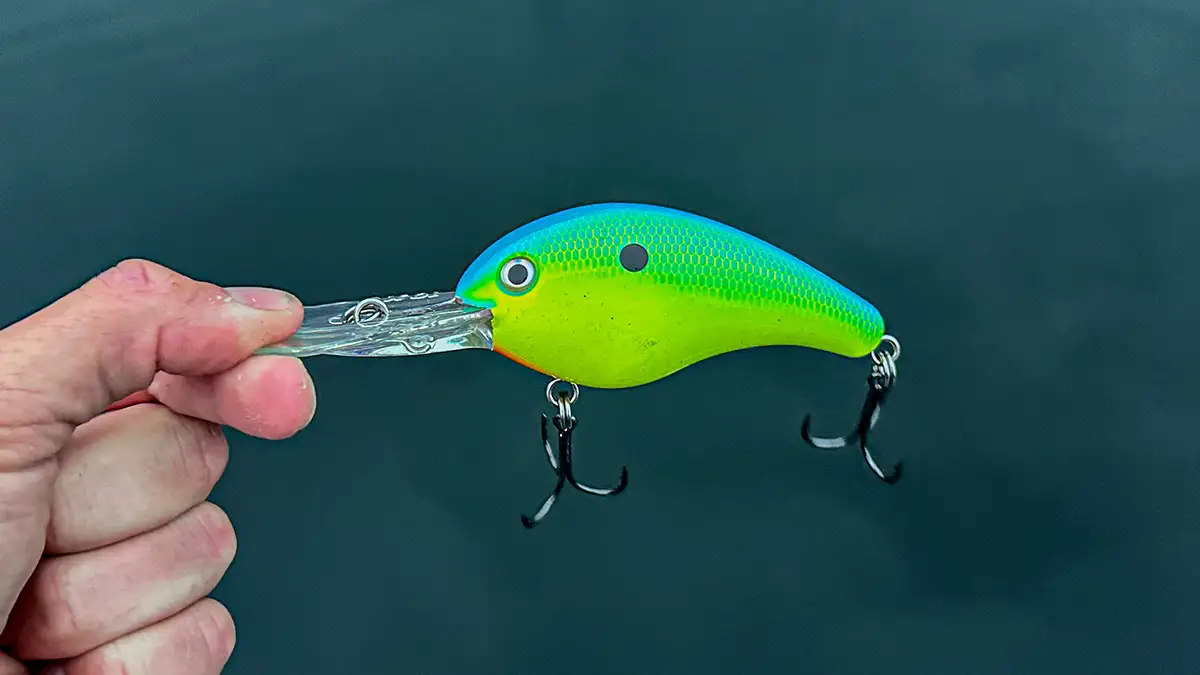
BAIT SELECTION
While the ledge fishing staples still work this time of year, there are a few other baits that really shine once the water temperature drops. This includes a crankbait, damiki rig and a football jig. A deep diving crankbait is great for catching quality fish this time of year, however it can be harder to get a bite. I typically only throw this lure when fish are grouped up on the bottom. Making a long cast over the school and quickly burning it back to the boat is a great way to generate a reaction strike in this scenario. Some of my favorite crankbaits include the Strike King 10XD and the Duo Realis G87 20A.
Once the school starts to disperse, I like to switch over to a jig. Throwing this lure at individual fish sitting right on the ledge is a great way to get a few bites once fishing slows. This bait can also be effective in groups of fish that don’t want to chase down a moving bait. Dragging this lure across hard bottom is generally the key for getting bit. Both hopping and slowly dragging this bait across shell beds and other types of structure are great ways to get bit. One of my go to jigs for this scenario is the Greenfish Tackle Little Rubber Jig.
Lastly, a damiki rig is a great choice when fishing for both suspended fish and ones glued to the bottom. As water temperatures cool, fish begin to key on baitfish. This is one of the main reasons this bait starts to shine this time of year. Live sonar has helped in making this an extremely valuable tool for targeting suspended fish. Throwing this lure at fish feeding on bait balls is a great way to catch bass this time of year. Making a long cast over the fish, then slowly working it over their heads is the best way to get them to react. A damiki rig is an extremely effective tool for target offshore bass once water temperatures fall into the 60’s.
Fall ledge fishing is a great way to catch a ton of fish once you understand where and what to look for. Current, bait and bottom composition all play a roll in positioning these bass to feed. However, when these conditions line up it can be a magical day of fishing. While it’s predominantly known as a summer pattern, ledge fishing is still a great way to catch bass as the majority of anglers transition into their traditional winter patterns.







